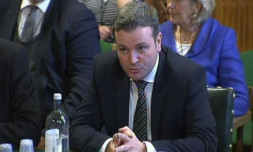
Two regions in the north of England have been hit with more than half of the country’s nursing cuts.
A Sunday Post investigation has revealed a staggering 2,725 of the 5,000 full-time nurses who have disappeared from England’s hospital wards since the May 2010 election came from either the North West or Yorkshire and the Humber. This is despite the population in the two regions soaring by almost 150,000 over the same period.
Critics have accused the Coalition Government of destroying healthcare in the North. Meanwhile hospitals in the South East have seen their numbers swell by 342 over the same period.
The revelations come just weeks after two NHS trusts in the North West North Cumbria University Hospitals and East Lancashire had been placed in “special measures” over high death rates. This means outside experts have been sent in to make urgent improvements.
Steve Flanagan, regional director of the Royal College of Nursing, blasted: “It is a matter of great concern that over half of the total cuts appears to have happened in the North West and Yorkshire and the Humber. It is a health service that cannot afford to lose these nurses.
“Three of the trusts considered by Keogh are situated in the North West region and it goes to illustrate where we lose these nurses quality of care does suffer.”
Jamie Reed, MP for Copeland in Cumbria and the shadow health minister, claimed it was a trend which could not continue.
He said: “The NHS cannot continue to take cuts to nurses on this scale and maintain standards of patient care.
“David Cameron promised to protect the NHS, but on his watch it is going backwards.
“Billions have been wasted on a re-organisation nobody wanted and nobody voted for and almost 5,000 nursing posts have been lost with the North West facing the brunt of these cuts.
“Ministers can no longer ignore warnings about the importance of safe-staffing levels, they must urgently intervene to ensure all our hospitals have enough nurses.”
Last week the Government announced that an extra £500 million would be given to hospitals across the UK to help ease the crises gripping accident and emergency services.
The cash will be spent over the next two winters in hospitals which are under the biggest strain.
But the move was branded a “stop-gap fix”.
A Department of Health spokesperson said: “Hospitals should make sure staffing levels are appropriate to the needs of their local population, based on clinical need and sound evidence.
“Nursing leaders have been clear that hospitals should publish staffing details and the evidence to show that staff numbers are right for the care needs of the patients they look after.
“Overall, the number of clinical staff in the NHS has risen and the number of admin staff has fallen by almost 21,500 since May 2010.
“The Government has also recently announced the new Chief Inspector of Hospitals who will take action if hospitals are found to be compromising patient care by not having the right number of staff on wards.”

Enjoy the convenience of having The Sunday Post delivered as a digital ePaper straight to your smartphone, tablet or computer.
Subscribe for only £5.49 a month and enjoy all the benefits of the printed paper as a digital replica.
Subscribe